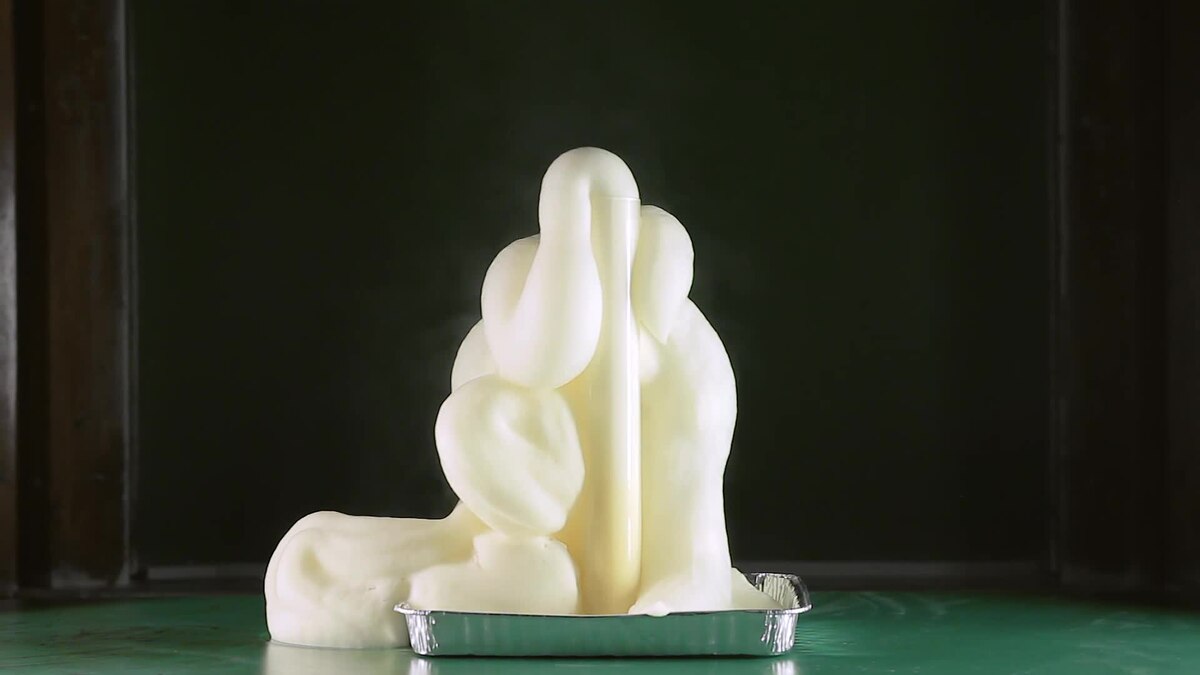
The types of crosses around the world have their own meanings depending on the type of Christianity. People, regardless of their religion or position in the world, would be knowledgeable of what a cross is and what it means for Christians. The different cross images related to Jesus Christ, whether it’s Jesus carrying the cross or Him being nailed onto it, are some of the most well-known portraits in the world. However, you should know that there’s more to a cross than meets the eye.
The cross is the most popular of the Christian symbols. It is the image of Jesus’ ultimate sacrifice to save humanity from sin. However, there are many other uses of the cross sign way before Christ was associated with it. But during Christ’s era, it was known as a symbol of the ultimate punishment: death.
Learning about the different types of crosses, Christianity-related or not, helps raise awareness of the rich history of the symbol and its varieties. Because of Christianity’s wide expansion, no two cross designs are the same. Apart from its history, this article will help you learn to whom each cross icon is for and why.
Origin of the Crosses
There have been many types of crosses since the birth of civilization. Many do not know it, but the cross symbol was actually not created by Christians. Since the dawn of time, Egyptians, Indians, Persians, Greeks, Europeans, and Syrians, have been using the cross as a symbol of their faith. Some of them used it as part of ornaments or even jewelry like rings and necklaces as well.
There was also a time when drawing crosses meant extreme torture and punishment. Historians and archeologists call this period the Diocletianic Persecution or the Great Persecution. Roman emperors such as Galerius, Maximian, Constantius, and Diocletian enforced restrictions on Christians. Many patron saints were beheaded, abused, publicly humiliated, and even forced to denounce Jesus. Cross symbols had then become a mockery solely for Christianity. During this time, Christianity was considered a fool’s religion.
Thankfully, all of that changed when Constantine, the first Roman emperor to legalize Christianity, arrived. Emperor Constantine’s mother, Helena, was said to have found pieces of the original cross of Jesus Christ. Legend has it that a piece of Christ’s cross has extraordinary healing powers. Take note that there has been no proven evidence of this legend and that this may have been a political strategy to gain more Christian followers for Constantine.
Types of Crosses
We should start by defining the difference between heraldic crosses and religious crosses, since there are many types of crosses involved in this article. Heraldic crosses were used as identification between enemy and foe. Many of these crosses were used to proclaim their faith in God while in battle. Most religious crosses involved Christianity. However, there were those that involved pagan religions, Buddhism, and Jainism as well.
It’s important to know the different historical backgrounds of each cross you may encounter. Not just for fun trivia at a dinner party, but so you could further appreciate each of their designs and symbolism. So, why don’t we get started on some of these types of crosses?
Ankh
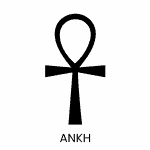
The Ankh is the first on our list of types of crosses. The common description of the ankh is that it’s a cross with a circle on top. Egyptian artists used the ankh to symbolize life both in written text and as a symbol. Egyptian gods and goddesses (including pharaohs) were always seen holding an ankh or offering one.
The Coptic Orthodox Church used the ankh as a symbol. Egyptians, who were predominantly Muslim during the 7th century, used to call themselves Copt before the colonization of the Arabs. Once the Muslims had abandoned the word, Copt became a name for Christian Egyptians. The Coptic Orthodox Church believed that Jesus Christ had both his humanity and divinity during the Incarnation.
Maltese Cross

The Eight-Pointed Cross, also known as the Maltese Cross, is a cross with four “V” lines pointing inwards. The cross is known for its affiliation with the Knights Hospitaller, who are also known as the Knights of Malta. They were formed in 1048, with their initial name being the Order of St. John of Jerusalem. The Knights Hospitaller focused on creating hospital wards for pilgrims in Jerusalem during their earlier years.
Nowadays, the Order of St. John of Jerusalem has replaced their name as the Sovereign of Malta. Knights of Malta were bound by three vows: chastity, obedience, and poverty. Eventually, the knights became proper soldiers who defended their headquarters and patrolled their roads. The Sovereign of Malta has now become an international order, focusing on building hospitals and keeping diplomatic relationships with over a hundred countries in the European Union.
Jerusalem Cross
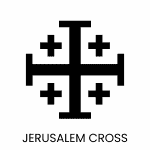
The Jerusalem Cross was the coat of arms for the city of Jerusalem during the 1800s. It’s known as the Five-Fold Cross or Cross-and-crosslets. The crosslets are a symbolism of Christ’s five holy wounds. The Five Sacred Wounds of Christ are the two wounds on his hands, the two on his feet, and the one on his chest which was said to be inflicted by the Staff of Longinus.
Historians have traced the use of the Jerusalem cross back to the 11th century. During this time, the Crusaders had taken control of Jerusalem after converting the country into Christianity. It was used by Godfrey de Bouillon, one leader of the Crusades. The Equestrian Order of the Holy Sepulchre of Jerusalem still uses this symbol today.
Orthodox Cross
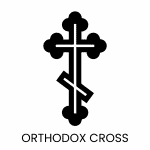
The Russian Orthodox Cross, also known as the Russian cross, has large similarities to the Latin cross. There is only one difference between the two, and that’s the other line crossing the horizontal one in a slanted form. The reason for the Orthodox cross’ uniquely slanted line is to commemorate the two other people that were crucified alongside Jesus Christ.
The two thieves were Saint Dismas and Gestas. Saint Dismas is the good thief, a repentant thief who begged Christ to forgive him for his misdeeds. Gestas remained a thief and died a thief.
Gamma Cross
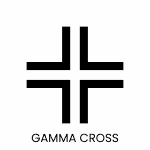
The Gamma Cross, also known as the Gammadion Cross, is a cross formed by the letter gamma in the Greek alphabet. There’s a good meaning behind the design of the gamma cross. Each gamma letter represented the Four Evangelists. They are Matthew, Mark, John, and Luke. All the gamma letters meet at the center, which forms the main cross representing Jesus Christ.
There are three variations of the gamma cross. The Thugsta cross is the youngest version of the gamma cross, which is not a Christianity-related cross. Another is the voided cross, which is called so because the original design has no closed lines. And the final one is the swastika cross, which has now become a symbol associated with Adolf Hitler’s Nazi regime.
Chi Rho Cross (Alpha/Omega)
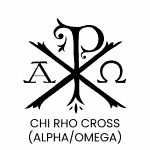
The Chi Rho Cross is also known as the Chrismon or Constantine’s cross. Christograms are letters forming symbols. The Chi Rho Cross is one of the earliest created Christograms. Chi and Rho are Greek letters that are first used to spell Christos. The Roman Emperor Constantine used the Chi Rho Cross as a symbol for his military. He believed that this was a way to bring God’s grace over them as they battled against their enemies.
The Chi Rho Cross usually has a circle around it (mostly a wreath) symbolizing Christ’s victory over death and his resurrection.
Coptic Cross

The Coptic cross may be easily confused with the ankh because of its ties with the Coptic Orthodox Church. However, they are two different types of crosses but both are used by the Coptic Church. As discussed in the ankh section, the Coptic Church is the main headquarters of Christianity in Egypt. Historians theorize that the Coptic cross was created with the ankh as its guiding design.
Another name for the Coptic cross is the Crux Ansata. The Coptic cross symbolizes faith within the story of the Passion of Christ and his resurrection.
Latin Cross

The Latin cross is the Catholic cross symbol and is the most recognizable out of all the types of crosses. All Catholic churches have either a sculpture of Jesus on the cross, images of a saint, or a picture of the cross overlooking the building. The Latin cross, with Jesus crucified on it, would usually have the crucifix letters: INRI above Jesus’ head, which is the most common theme of Jesus on the cross.
INRI stands for Iensus Nazarenus Rex Iudaeorum, which means Jesus of Nazarene, King of the Jews. This was the charge which Jesus was tried for by Pontius Pilate. They used Latin and placed the sign on Christ’s head for people to read the crime. While it used to be an accusation or form of statement against him, INRI has now become a symbolic proof of Christ’s divinity.
Celtic Cross

The Irish Celtic Cross is heavily associated with both Ireland and the Christian religion. According to Irish folks, it’s impossible not to find a Celtic cross in the country. 8th-century Celtic crosses often depict knotwork. Those that followed developed intricate designs regarding the Bible.
Celtic crosses have a signature ring covering the center of the cross. Many historians debate on the true meaning of the Celtic cross’ ring. While some say it’s a halo, others insist on it being a celestial circle. The last theory is that it is a Celtic shield and an attempt to mix both Christianity and Celtic symbols.
Golgotha Cross
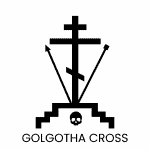
The Golgotha Cross is a significant image of true forgiveness. It is one of those types of crosses that have many significant images in them. The cross itself has high similarities with the Greek Orthodox cross. However, the Golgotha cross features another line above the cross’ head.
The Lance of Longinus appears at the cross’ side. On the opposite side is the sponge stabbed at the end of a long stick. On the other side is the sponge they have used to give Christ vinegar to drink. The skull at the bottom represents Mt. Golgotha, where Christ has passed. The inscription is written in different languages which all describe that Jesus has become king and that Golgotha, once a place of death, has become paradise.
Tau Cross
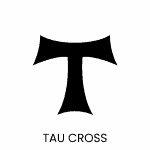
The Tau cross is another one of the Christograms created as a type of cross. It is a representation of the cross found in the Old Testament and resembles the Greek letter “tau”, hence the name.
Historians believed that the Tau cross was the type of cross Christ was originally crucified on. In the book of Ezekiel, the Tau cross was said to be a sign placed on the foreheads of God’s chosen ones who wished to be saved. St. Francis and St. Anthony are associated with the tau cross. The Franciscan Order uses the tau cross because it is St. Francis’ symbol.
Papal Cross

The Papal cross is the symbol of the Pope. Currently, Pope Francis is the leader of the Roman Catholic order. It is the symbol of the highest authority in the religion, in which only the pope may use it. It is a Latin cross with three horizontal lines of increasing length, instead of just one.
The Papal cross was given to the Knights Templar, who then carried it on their way to the Crusades. Additionally, the three lines are representations of The Holy Trinity. Another meaning besides The Holy Trinity is the Pope’s authority around Heaven, Earth, and the Church.
Greek Cross
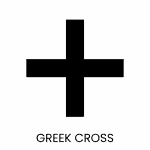
The Greek cross is also called the Crux Immissa Quadrata or the Tetractys, whereas four extensions of the cross are equal. Moreover, the Greek cross was famously used during the earlier days of Christianity. Today, the Eastern Orthodox Church commonly uses it.
The Greek cross was also used as a pattern design for various items. Egyptians, who have a rich history with Greeks, were also seen using the cross as an ornament, rather than a symbol of Christianity. The Greek cross was also called the Tetractys by those who admired Pythagoras of Samos, a father of philosophy and mathematics. To them, the Greek cross represented earth, fire, water, and air.
Scandinavian Cross

Some people know the Scandinavian cross more commonly as the Nordic cross. Many countries, such Denmark, Iceland, Finland, Sweden, and Norway, for example, use the Scandinavian cross on their flags to present their country as a Christian country.
The Scandinavian cross is always far from the center. Every time it is used on a flag, the cross is always closer to where the flag will be hoisted. Origins of the Scandinavian cross could be traced back to Denmark, where it was first used. During the time of Denmark’s rising Christianity, it was also co-existing with Norse heathenism. Sweden follows shortly after Denmark, mimicking the design of the Danish flag to ally themselves with Christians.
Saltire (St. Andrew’s Cross)

Saltire, also known as St. Andrew’s cross, is one of the types of crosses that are reflected in flags. The cross is used only by Scotland, unlike the Scandinavian crosses that are shared throughout other countries. The word “saltire” is derived from the French word “saultoir”, which describes the flag as a cross with diagonal bars at equal length.
St. Andrew’s cross has a particular legend regarding why the cross was created. It is said that during the martyrdom of St. Andrew, the patron saint of Scotland, he requested not to be crucified similarly to Christ, for he believed that he wasn’t worthy of dying the same way. Instead, St. Andrew was crucified in the shape of a saltire.
Sun Cross
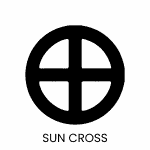
The sun cross is one of the types of crosses that has originally nothing to do with Christianity. Similar to the ankh, the sun cross was used for a different purpose before the time of Christ. It symbolized the birth of the wheel that aided mankind’s advancement towards civilization. After a few hundred years, the sun cross’s symbolism was then changed to that of a cross with a circle inside, representing the power of authority by the ancient kings.
Alchemists also used the sun cross as a representation of copper alloy after the ancient kings. Today, astrologists now use the sun cross to represent the earth. Christians, on the other hand, used the sun cross to symbolize power the same way the ancient kings once did. Some Christians prefer the circle to represent an angel halo, signifying the angels and saints that guide them and their decisions.
Lithuanian Cross
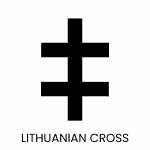
The double cross, also known as the Lithuanian cross, was used to celebrate the independence of Lithuania from other countries during the earlier days of the 20th century. The double cross was used to represent the government branches of Lithuania. Those that used the Lithuanian cross were pilots, public figures, and the Lithuanian army.
Originally, the double cross was used by Poland’s King Jogalia of 1386 as a personal insignia. After his death, King Jogalia’s brothers and descendants eventually used the double cross, officially labeling it as the family insignia of the Jagiellonian Dynasty. The double cross was created to symbolize the baptism of King Jogalia into Christianity.
Byzantine Cross
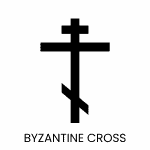
The Ukrainians are incredibly attached to the Byzantine cross out of all the types of crosses. It has also been called the Eastern Cross because it is usually used by Orthodox Christians who primarily exist in the East.
The Byzantines believed in the humanity of Christ, as compared to Roman Catholics, who believe only in the divinity of Christ. Byzantine crosses originated during the reign of the Byzantine Empire.
Bolnisi Cross

The Bolnisi cross was taken from a 5th-century design found in the Bolnisi Sioni Church, Georgia’s oldest church and ancient basilica, found in Kvemo-Bolnisi. Archeologists pinpointed its construction during the reign of King Gorgasali around 478 to 493 AD.
The government of Georgia has been using the Bolnisi cross as a symbol of Georgia today. It is a unique design that has given rise to various cross variants, such as the Maltese cross and the Iron cross.
Schwarzkreuz
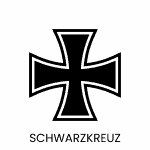
The Schwarzkreuz is a German cross used by the German military after it was originally used by the Prussian Kingdom during their battles with Napoleon. Later, the German military adopted the Schwarzkreuz during the late 1800s to early 1900s. Reuse of the Schwarzkreuz would later be done by Adolf Hitler’s Nazi Germany.
The cross is also known as the iron cross. The inside of the Schwarzkreuz is black, outlined with silver. Schwarzkreuz is also a derivation of the Teutonic Order’s official logo. The Teutonic Order was also called the Order of Brothers of the German House of Saint Mary of Jerusalem.
St. James Cross
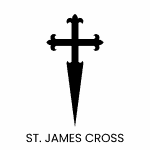
St. James’ cross is decorated with Compostela shells and a sharp end on its bottom. The shells come from Santiago de Compostela, the place where St. James the Greater is said to have been laid to rest. The sharp ends are a reminder of the pilgrims who trek to the holy lands intending to worship The Holy Trinity. Travelers who need to stop for a moment would stab their pointed crosses onto the earth to pray. However, it is also called the warrior’s cross in reflection of St. James the Greater’s powerful personality.
St. James was one of the first people to experience martyrdom because of his journey to a place where Christ had not yet been discovered. It is unknown whether this place was Spain, but St. James’ relics and his body indeed remain inside the Santiago de Compostela Cathedral.
Toulouse Cross
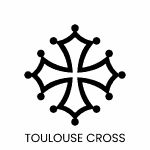
There are many names for the Toulouse cross just as there are many types of crosses. Examples of these names are the Occitan cross, and the cross of Languedoc. The Toulouse cross is more closely associated with Occitania, a place where the Occitan language is spoken. Occitania has a yellow Toulouse cross behind a red background as its flag.
Toulouse cross was a coat of arms for the family of St. Giles of Toulouse in the Middle Ages. Despite its similarity to the Bolnisi cross, it has no direct relationship with Christianity.
Marian Cross
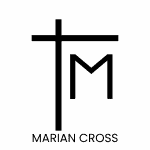
Out of all the types of crosses listed here, the Marian cross may be the youngest of them. Pope John Paul II designed the Marian cross and popularized it. It is derived from the Latin cross with the letter m placed on either side. The Marian cross is a symbolism of Mother Mary and her dedication and love for her son, Jesus Christ.
Pope John Paul II wanted people to realize the significance of Mother Mary’s mission to Jesus Christ’s upbringing and Christ’s own mission on Earth. However, there is also another design of the Marian cross found in 1830. The Miraculous Medal places the letter “m” for Mary in between a double-barred Lorraine cross. It is also called The Medal of Our Lady of Graces.
Anchored Cross
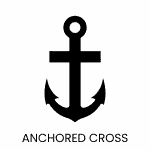
The Anchored cross is one of the earliest cross variants on this list of types of crosses. It is also called the mariner’s cross. The mariner’s cross is like a Latin cross, except for its protrusions looking like the base and top of anchors.
While it is heavily associated with Christianity, it is also more famously known as St. Clement’s Cross. The martyrdom of St. Clement occurred at the Black Sea, where he was thrown overboard with an anchor attached to him. St. Clement was punished after being exiled from Rome. He was then forced to work at the stone quarry where there were dehydrated slaves. There he prayed, and a lamb appeared to guide him where water could be given. The conversion of all the pagans and slaves, thanks to this miracle, caused his martyrdom.
Grapevine Cross

Grapevine Cross, also known as the Georgian cross or the Saint Nino’s cross, is largely used by the Georgian Orthodox Church. It was first used around the 4th century in the Kingdom of Iberia. At that time, Iberia declared Christianity as its major religion.
The Grapevine cross is easily differentiated from the rest of the types of crosses because of its droopy arms. The design of the Grapevine cross comes from the legend of Saint Nino’s interaction with Mother Mary. It is said that Saint Nino received a cross from Mother Mary, which he entwined using her own hair to keep it in place.
Basque Cross

The Basque Cross is one of the types of crosses that resembles a swastika. Basque crosses are also called Lauburu crosses, which have been brought in by Celtic men around 200 years BC, and described to have round ends. The Basque cross itself is a mythological symbol that represents the sun.
Serbian Cross

The Serbian Cross is a representation of all the Serbians and the Serbian Orthodox Church. It is also part of the coat of arms and the flag of Serbia. The Serbian cross took inspiration for its design from the Palaiologos Dynasty of the Byzantine Empire.
Serbian crosses use Greek letters to form designs just like the other types of crosses listed here. The Greek letters used are four betas. Saint Sava, the archbishop of Serbia, has been put in the letters of the Serbian cross to commemorate him as tradition.
Novgorod Cross
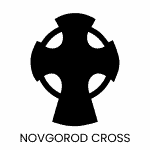
Novgorod Crosses are types of crosses that remain alive in Russia. They are often mistaken as Celtic crosses. Every Novgorod cross is a four-pointed cross with a circle.
Novgorod crosses only exist in Novgorod, Russia. Historically, Novgorod had not been conquered or unified by any other outsider nation (even Russia itself during its unification.) As a result, the churches of Novgorod still remain standing. The territory itself has created its own form of architecture using the Novgorod Cross on churches and tombstones.
Bottony Cross
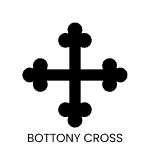
A bottony cross is basically more of a heraldic cross rather than a cross related to culture, religion, or Christianity. The bottony crosses are designed in such a way that there are button-like circles at the end of them.
Bottony crosses were often used in armor, and often mistaken for Cross Crosslets. Another word for Bottony cross is the Treflys Cross. According to some researchers, the Episcopal Church uses a Bottony cross, although the Church declares it as a Cross Crosslet.
Cross Crosslet
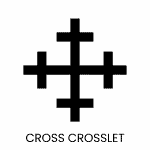
A Cross Crosslet is often mistaken for a Bottony Cross. As discussed earlier, the Episcopal Church declares their symbol of the cross as a Cross Crosslet. However, this does not stop a Cross Crosslet from being used as a heraldic cross. In fact, it has been used by many noblemen such as Beauchamp, Earl of Warwick, and Baron Willoughby de Broke.
It is also used by Dievturība, a Latvian religion. Dievturība is a neopagan religion that aims to revive religions pre-Christianity. It is based on Latvian mythology and still exists in the modern world.
Cross of St. Peter
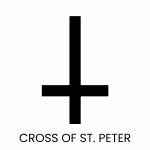
The Cross of St. Peter, also known as the Petrine Cross, was used during the martyrdom of St. Peter the Apostle. He was originally to be crucified the same way as Jesus Christ. However, St. Peter believed he had no right to be killed the same way as Christ, so he then requested that his cross be placed upside down. As a result, the cross of St. Peter is basically an upside-down Latin cross.
Archbishop Cross

Also known as the Patriarchal cross or the archiepiscopal cross, the Archbishop’s cross is a double-barred cross used only by archbishops of the Roman Catholic church. It is very similar to the Cross of Lorraine.
The Patriarchal cross is an elongated double-barred cross that signifies the resurrection of Christ. It is also only used by archbishops to portray the dignity and hierarchy of the archbishops in the Catholic Church.
Cross of Burgundy
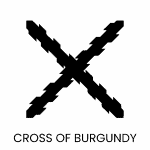
The Cross of Burgundy is another form of St. Andrew’s cross. The Valois family, who were the Dukes of Burgundy, used this cross as a family insignia in the 15th century. They ruled a large portion of Eastern France and the Burgundian Low Countries as an independent state. Once the Valois family became extinct, the Habsburgs then took over control of the Burgundian Low Countries while maintaining the Cross of Burgundy.
The Habsburgs then started to rise to power in Spain, becoming a political figure that conquered many parts of the world under the Cross of Burgundy. While it became more of a heraldic cross in the end, its relation to St. Andrew’s cross still remains significant. The only difference between the two is that the Cross of Burgundy has jagged edges compared to the linear lines of St. Andrew’s cross.
Templar Cross
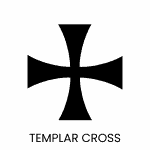
Templar Cross is one of the most famous of the types of crosses besides the Latin cross and the Orthodox cross. The Knights Templar used the templar cross during their crusades as a symbol of martyrdom as they expected to die during those times. They had a cardinal rule: to never surrender unless the flag itself had fallen.
The Templars used the Templar Cross that was in uniform to many other cross variants. However, the difference was that it was always red. The cross would appear behind a black and white background as a flag during the battles of the Knights Templar. They are believed to have disbanded around 700 years ago.
Nazi Swastika
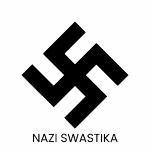
The swastika was originally a symbol of pagan worship and is also associated with Buddhism, Jainism, Hinduism, and Odinism. It is used to symbolize the sun’s natural course and good omens. Just like the ankh, the swastika was used as a cross variant to Christ. However, because of the Nazi Regime, the swastika is now more closely associated with racism and other ideologies proliferated by Adolf Hitler’s sovereignty.
Now, the symbol strikes fear in the hearts of many as it is a reminder of the Holocaust, World War II, and the totalitarian environment across Germany.
Indian Swastika
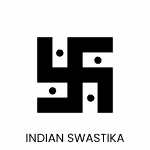
The Indian Swastika is like the regular swastika except for the dots that exist in between the crosses. The swastika is a Sanskrit word meaning “conducive to wellbeing.” It meant good omens and is closely related to the Fylfot, which was the left-facing swastika called the sauwastika.
The Indian Swastika is a right-facing cross that has also been adopted by Buddhism and other religions. It was once a loved symbol by people from all over the world with different cultures and religions (even the Christians). However, Adolf Hitler’s association of the Aryan race with the Swastika stamped a dark mark on it.
Balkenkreuz

The Balkenkreuz was the sigil of the German Armed Forces, their air forces, and their navy. Balkenkreuz was first used in 1918 until the end of the First World War. It was then reused by Nazi Germany during the Second World War. The Schwarzkreuz was derived from the Balkenkreuz.
Despite its similarity to the cross of Christ, Balkenkreuz has no relationship with Christianity. However, it was derived from the Greek and Maltese cross that do have ties with the Christian religions. Balkenkreuz is purely decorative and is now an insignia of war and terror rather than anything else.
Cross of Lorraine

The Cross of Lorraine is double-barrelled, just like the Lithuanian cross and the Archbishop’s cross. It became a symbol of France during their battle to reclaim their lost territory against enemy forces.
The history of the Cross of Lorraine can be traced back to Hungary. Bela III, the king of Hungary, used the cross variant in the 12th century. Archeologists and historians believed he had designed the cross as a variant of the Byzantine cross. Rene II was a descendant of the Anjou family in Hungary, who became the Duke of the Lorraine Duchy, thus having the cross traced into France.
Fylfot
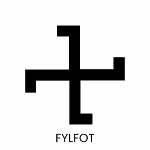
The fylfot and the swastika go hand in hand. People also call the fylfot the croix gammee, tetraskelion, cross cramponnee, and gammadation. The similarities of the fylfot and the swastika are close, except that the fylfot’s hands take a sharp turn to the left. Therefore, it may also be called the left-facing Swastika.
The word fylfot has Old English origins meaning four-foot. The fylfot was originally notable to the Germanic tribes as a sacred symbol of Thor, the Norse god of thunder. In other words, the fylfot was the hammer-mark of Thor. It is an ancient symbol of worship and religious practices from Buddhism, Hinduism, Jainism, and Eurasian pagan religions. Unlike the Swastika, fylfot was not used as a symbol of Christianity because it was meant to be a guidance to the underworld, or being against the course of nature. The swastika represented the motion of the sun and good omens. Therefore, Christianity adopted the swastika until the Nazi regime.
Cross Pisana

The Cross Pisana, also known as the Pisan Cross, was once the coat-of-arms of the people of Pisa. Historically, it was granted by Pope Benedict VIII to the Pisans during their wars with Saracens in Sardinia, Italy, around 1017.
Physical descriptions of the Pisan Cross describe it to have paws or keys because of the three circles on every edge of the cross’ lines. The true meaning behind the Pisan Cross is unknown. However, some people believe the circles represent the twelve apostles of Christ surrounding him. Modern Pisa uses the Cross Pisana to represent its local administrative division in Italy.
Crosses As Jewelry
Crosses are symbols in jewelry design that designers cannot ignore. They can be found in bracelets, pendants, and rings. Religious adherents who wear cross jewelry to bolster their faith, for purification, or to remember Jesus’ death for the salvation of all humanity have the potential to bless happiness and reality as well as a mystifying power in the near future. Visit gthic.com to buy beautiful and trendy Christian jewelry.
Was this page helpful?
Our commitment to delivering trustworthy and engaging content is at the heart of what we do. Each fact on our site is contributed by real users like you, bringing a wealth of diverse insights and information. To ensure the highest standards of accuracy and reliability, our dedicated editors meticulously review each submission. This process guarantees that the facts we share are not only fascinating but also credible. Trust in our commitment to quality and authenticity as you explore and learn with us.


